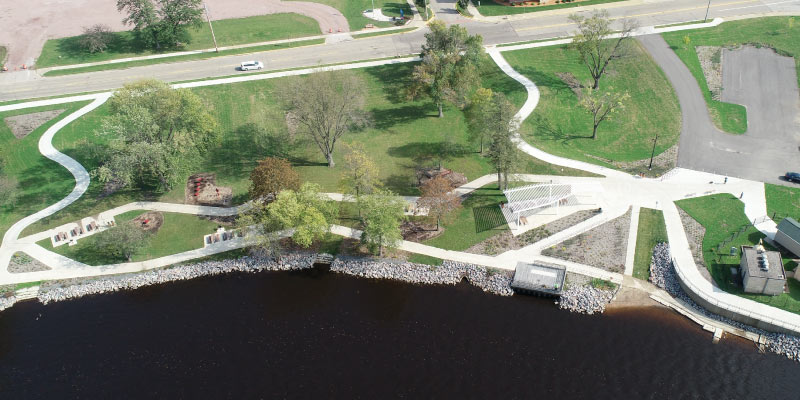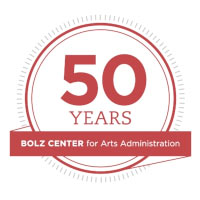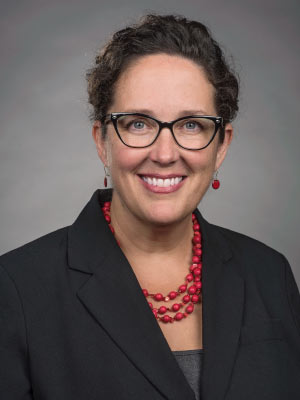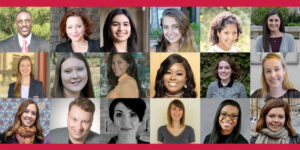
Promoting community vibrancy and revitalization through the expansion of arts and cultural experiences is the goal of a recent partnership between Wisconsin Rapids and the University of Wisconsin-Madison UniverCity Year program. At the intersection of art, business, and the Wisconsin Idea, this partnership, which also includes assistance from the Bolz Center for Arts Administration, aims to redefine rural public art policies and promote diversity all while facilitating learning opportunities for students and the community.
 The partnership was forged thanks to the UniverCity Year program, which brings faculty, students, and members of Wisconsin communities together to address local challenges through engagement, university research, and state-of-the-art problem-solving approaches. In this case, UniverCity Year helped to facilitate a partnership between Wisconsin Rapids and students in the Wisconsin School of Business’ Arts and Creative Enterprise Leadership program. The program is housed in the Bolz Center for Arts Administration and blends business and arts-based training to prepare students to lead in the art, creative, and social sectors. Students in this program have the opportunity to take a course titled “Impact Consulting for Arts-Based Organizations and Communities I & II” during which students engage with a client to solve a real-world challenge.
The partnership was forged thanks to the UniverCity Year program, which brings faculty, students, and members of Wisconsin communities together to address local challenges through engagement, university research, and state-of-the-art problem-solving approaches. In this case, UniverCity Year helped to facilitate a partnership between Wisconsin Rapids and students in the Wisconsin School of Business’ Arts and Creative Enterprise Leadership program. The program is housed in the Bolz Center for Arts Administration and blends business and arts-based training to prepare students to lead in the art, creative, and social sectors. Students in this program have the opportunity to take a course titled “Impact Consulting for Arts-Based Organizations and Communities I & II” during which students engage with a client to solve a real-world challenge.
Throughout the 2020 and 2021 school year, students in the course were partnered with community leaders in Wisconsin Rapids to develop three projects supporting public art and culture:
- Assessing the City of Wisconsin Rapids Policy Support for Public Art
- Designing a City of Wisconsin Rapids Arts Collaborative Initiative
- Celebrating Culture Summaries and Recommendations for Future Cultural Engagements in Wisconsin Rapids
“Wisconsin Rapids has, in the last couple of years, reinvested in the community. We’ve reconstructed our parks along the riverfront, we’ve redeveloped our downtown mall, we’ve redeveloped our aquatic center, and we’re continuing to make improvements, but one thing that has been lacking is the addition of arts and culture which helps to define a sense of place,” shared Wisconsin Rapids Director of Community Development, Kyle Kearns. “We have a lot of culture and history, and in partnering with UW-Madison, we were able to place a high priority on this and from there it was about bringing stakeholders to the table and having them provide comments. Essentially from that we created these three projects and we’ve been happy with the outcome of what the students came up with.”
“We want to make sure our students don’t abandon art and that creative part of themselves,” Richardson said. “We know for a fact, studies show, that including art and creativity as a part of their education is going to make them better businesspeople.” –Angela Richardson
While a variety of students and community members were involved with each project, the course was led by John Surdyk, interim co-director at the Bolz Center for Arts Administration and Angela Richardson, a faculty associate and aesthetics and business project coordinator with the Bolz Center for Arts Administration.

“There is a great alignment between UniverCity Year and our program at the Bolz Center as we emphasize direct experience and are supporting entrepreneurship for students beyond the boundaries of the Wisconsin School of Business,” shared Surdyk, noting that the partnership was a great fit as both programs promote the Wisconsin Idea that education should influence people’s lives beyond the boundaries of the classroom.
Richardson echoed that sentiment, adding that in addition to offering students opportunities to engage with community members and create change, the Bolz Center programing also supports the merging of business and art, two areas that are not always seen as related.
“We want to make sure our students don’t abandon art and that part of themselves,” Richardson said. “We know for a fact, studies show, that including art and creativity as a part of education is going to make them better people and businesspeople.”
Richardson, who is trained in art says she enjoys working with the students at the Wisconsin School of Business, helping them to merge the arts and business. While she says there can be a push and pull between the two subjects, she likes being the person who helps people to see how art and business meet and inform each other.

Top row L to R: Brian Nkemnji, Jessica Jane Witham, Adalia Hernandez Abrego, Lexi Janssen, Sophie Willer, Hannah Goldberg
Center row L to R: Alexis O’Connell, Bailey Curtis, Ginger Ann, Deja Mason, Starr Welk-Schwartz, Elena Duran
Bottom row L to R: Olivia Dahlquist, Brian Cowing, Leah Kolb, Emily Gorteski, Taeli Reistad, Tori Seaver
Aiding with the Arts and Creative Enterprise Leadership graduate program is one way that Richardson supports the merging of these two areas. The one-year graduate program includes courses such as the Impact Consulting for Arts-Based Organizations and Communities I & II course, which pairs business students with Wisconsin-based arts, culture, and related organizations. The students then work with the organization, in this case Wisconsin Rapids, on the development of placemaking initiatives, cultivation of new audiences for arts and culture experiences, and programs of strategic importance to arts and culture organizations. Through this work, students learn how to develop key relationships and strategies that promote community vibrancy, facilitate revitalization, and support organizational growth.
“The thing that is exciting to me about the impact consulting class is that the students become comfortable talking through what the project will entail upfront. Many consulting projects get derailed by people who have a vague idea or scope, so this learning process is really important, and our students are able to come out with a portfolio, in this case a situational analysis,” said Surdyk. “They’re also learning how to navigate really intense relationships with each other, what they bring to a team, how to manage their role in a team, and to think about themselves as consultants. This is one of the oldest programs of its kind and it has a really distinguished presence and is known for its role in developing future art leaders. There aren’t any in the nation that offer this spectrum of opportunities.”
While the program supports its students and helps them to gain confidence in the field, the Bolz Center and the UniverCity Year program are both meant to develop community partnerships that create positive change within the communities. In this case, the change was expanding arts and cultural experiences in Wisconsin Rapids, just as the area was being impacted by COVID-19 and the loss of a papermill.
“The very start of the semester, we have our students meet with the clients and really home in on the scope of work. They get specific and do a lot of research about who they are working with. They learn the context of what the city is dealing with. For example, last year Wisconsin Rapids suffered a great loss with the papermill closing, which the students needed to understand more about,” Richardson said. “Last year was also such an extraordinary challenge because of COVID-19. In fact, we weren’t able to do a site visit and get to see the community, so there was a high hope and expectation that students could connect using technology and they really did well.”
In the coming months, UniverCity Year staff will continue to connect with Wisconsin Rapids regarding the next steps of implementation, but the hope is that the partnership and sense of community that has been built will last for many years to come.
“We think this partnership shows the versatility of the UniverCity Year program. We work with places of all population sizes about almost any topic they can think of. In this case, we think we responded to the needs identified by Wisconsin Rapids, connected them to an innovative campus partner at UW in the Wisconsin School of Business, and students delivered a great set of reports with actionable items,” said Managing Director of UniverCity Alliance, Gavin Luter. “Working with these partners makes me so grateful to be involved with UniverCity Year.”
To learn more about each project and the ways students and the community worked together, we invite you to explore the following stories that outline each individual project.